Korg Pitchblack Poly Handleiding
Bekijk gratis de handleiding van Korg Pitchblack Poly (4 pagina’s), behorend tot de categorie DJ Gear. Deze gids werd als nuttig beoordeeld door 95 mensen en kreeg gemiddeld 4.6 sterren uit 48 reviews. Heb je een vraag over Korg Pitchblack Poly of wil je andere gebruikers van dit product iets vragen? Stel een vraag
Pagina 1/4

© 2012 KORG INC.
4015-2 Yanokuchi, Inagi-city, Tokyo 206-0812 Japan
Precautions
Location
Using the unit in the following locations can result in a malfunction.
• In direct sunlight
• Locations of extreme temperature or humidity
• Excessively dusty or dirty locations
• Locations of excessive vibration
• Close to magnetic elds
Power supply
Please connect the designated AC adapter to an AC outlet of the correct
voltage. Do not connect it to an AC outlet of voltage other than that for which
your unit is intended.
Interference with other electrical devices
Radios and televisions placed nearby may experience reception interference.
Operate this unit at a suitable distance from radios and televisions.
Handling
To avoid breakage, do not apply excessive force to the switches or controls.
Care
If the exterior becomes dirty, wipe it with a clean, dry cloth. Do not use liquid
cleaners such as benzene or thinner, or cleaning compounds or ammable
polishes.
Keep this manual
After reading this manual, please keep it for later reference.
Keeping foreign matter out of your equipment
Never set any container with liquid in it near this equipment. If liquid gets into
the equipment, it could cause a breakdown, re, or electrical shock.
Be careful not to let metal objects get into the equipment. If something does
slip into the equipment, unplug the AC adapter from the wall outlet. Then
contact your nearest Korg dealer or the store where the equipment was pur-
chased.
THE FCC REGULATION WARNING (for USA)
NOTE: This equipment has been tested and found to comply with the
limits for a Class B digital device, pursuant to Part 15 of the FCC Rules.
These limits are designed to provide reasonable protection against harm-
ful interference in a residential installation. This equipment generates,
uses, and can radiate radio frequency energy and, if not installed and
used in accordance with the instructions, may cause harmful interference
to radio communications. However, there is no guarantee that interference
will not occur in a particular installation. If this equipment does cause
harmful interference to radio or television reception, which can be deter-
mined by turning the equipment off and on, the user is encouraged to try
to correct the interference by one or more of the following measures:
• Reorient or relocate the receiving antenna.
• Increase the separation between the equipment and receiver.
• Connect the equipment into an outlet on a circuit different from that to
which the receiver is connected.
• Consult the dealer or an experienced radio/TV technician for help.
If items such as cables are included with this equipment, you must use
those included items.
Unauthorized changes or modication to this system can void the user’s
authority to operate this equipment.
安全上のご注意
ご使用になる前に必ずお読みください
ここに記載した注意事項は、製品を安全に正しくご使用い
ただき、あなたや他の方々への危害や損害を未然に防ぐた
めのものです。
注意事項は誤った取り扱いで生じる危害や損害の大きさ、
または切迫の程度によって、内容を「警告」、「注意」の 2
つに分けています。これらは、あなたや他の方々の安全や
機器の保全に関わる重要な内容ですので、よく理解した上
で必ずお守りください。
火災・感電・人身障害の危険を防止するには
以下の指示を守ってください
警告
この注意事項を無視した取り扱いをすると、死亡や重傷を負う可能性が予想
されます
・AC アダプターのプラグは、必ず AC100V の電源コン
セントに差し込む。
・AC アダプターのプラグにほこりが付着している場合
は、ほこりを拭き取る。
感電やショートの恐れがあります。
・本製品はコンセントの近くに設置し、AC アダプターの
プラグへ容易に手が届くようにする。
・次のような場合には、直ちに電源を切って AC アダプ
ターのプラグをコンセントから抜く。
○AC アダプターが破損したとき
○異物が内部に入ったとき
○製品に異常や故障が生じたとき
修理が必要なときは、コルグお客様相談窓口へ依頼
してください。
・本製品を分解したり改造したりしない。
・修理、部品の交換などで、取扱説明書に書かれてるこ
と以外は絶対にしない。
・AC アダプターのコードを無理に曲げたり、発熱する機
器に近づけない。また、AC アダプターのコードの上に
重いものをのせない。
コードが破損し、感電や火災の原因になります。
・大音量や不快な程度の音量で長時間使用しない。
大音量で長時間使用すると、難聴になる可能性があ
ります。万一、聴力低下や耳鳴りを感じたら、専門
の医師に相談してください。
・本製品に異物(燃えやすいもの、硬貨、針金など)を入
れない。
・温度が極端に高い場所(直射日光の当たる場所、暖房
機器の近く、発熱する機器の上など)で使用や保管は
しない。
・振動の多い場所で使用や保管はしない。
・ホコリの多い場所で使用や保管はしない。
・風呂場、シャワー室で使用や保管はしない。
Thank you for purchasing the Korg
pitchblack POLY
polyphonic pedal
tuner. To help you get the most out of your new instrument, please read
this manual carefully.
Controls
1
2
10 9 8 7
3
6
5
4
1. TUNER ON/OFF switch
2. TUNER ON LED indicator
3. INPUT jack (mono)
4. True BYPASS jack (mono)
5. Display
6. Meter Display
7. DC 9 V IN jack
8. DC 9 V OUT jack
9. DISPLAY button
10. CALIB (FLAT/CAPO) button
Installing the battery
1. Open the battery cover that’s located on the
bottom of the tuner.
2.
Attach the battery to the battery clip, making
sure that the polarity is correct.
3. Install the battery and close the cover.
When the battery nears the end of its life,
the TUNER ON LED will blink. When this
happens, install a new battery as soon as
possible.
この たび はコ ルグ・ ポ リ フ ォ ニ ッ ク・ペ ダ ル・チ ュ ー ナ ー
pitchblack POLY をお買い上げいただき、ありがとうございます。本
製品を末永くご愛用いただくためにも、取扱説明書をよくお読み
になって、正しい方法でご使用ください。
各部の名称
1
2
10 9 8 7
3
6
5
4
1.TUNERON/OFF スイッチ
2.TUNERONLED
3.INPUT 端子(モノラル端子)
4.BYPASS 端子(モノラル端子)
5.ディスプレイ
6.メーター・ディスプレイ
7.DC9VIN 端子
8.DC9VOUT 端子
9.DISPLAY ボタン
10.
CALIB(FLAT/CAPO)ボタン
電池の入れ方
1 本体裏側にある電池ケースのふたを開けます。
2
電池スナップに電池を取り付けます。電
池の極性に注意してください。
3 電池をケース内に収め、ふたを閉めます。
電池寿命が近づくと、TUNERONLED
が点滅します。早めに新しい電池に交換
してください。
付属の電池は動作確認用のため、通常よ
りも寿命が短い場合があります。
Notice regarding disposal (for EU)
When this “crossed-out wheeled bin” symbol is displayed on
the product, owner’s manual, battery, or battery package, it sig-
nies that when you wish to dispose of this product, manual,
package or battery you must do so in an approved manner. Do
not discard this product, manual, package or battery along with
ordinary household waste. Disposing in the correct manner will
prevent harm to human health and potential damage to the en-
vironment. Since the correct method of disposal will depend on
the applicable laws and regulations in your locality, please contact your lo-
cal administrative body for details. If the battery contains heavy metals in
excess of the regulated amount, a chemical symbol is displayed below the
“crossed-out wheeled bin” symbol on the battery or battery package.
IMPORTANT NOTICE TO CONSUMERS
This product has been manufactured according to strict specifications
and voltage requirements that are applicable in the country in which it
is intended that this product should be used. If you have purchased this
product via the internet, through mail order, and/or via a telephone sale,
you must verify that this product is intended to be used in the country in
which you reside.
WARNING: Use of this product in any country other than that for which it
is intended could be dangerous and could invalidate the manufacturer’s or
distributor’s warranty. Please also retain your receipt as proof of purchase
otherwise your product may be disqualified from the manufacturer’s or
distributor’s warranty.
* All product names and company names are the trademarks or registered
trademarks of their respective owners.
・雨天時の野外のように、湿気の多い場所や水滴のかか
る場所で、使用や保管はしない。
・本製品の上に、花瓶のような液体が入ったものを置か
ない。
・本製品に液体をこぼさない。
・濡れた手で本製品を使用しない。
注意
この注意事項を無視した取り扱いをすると、傷害を負う可能性
または物理的損害が発生する可能性があります
・正常な通気が妨げられない所に設置して使用する。
・ラジオ、テレビ、電子機器などから十分に離して使用す
る。
ラジオやテレビ等に接近して使用すると、本製品が
雑音を受けて誤動作する場合があります。また、ラ
ジオ、テレビ等に雑音が入ることがあります。
・外装のお手入れは、乾いた柔らかい布を使って軽く拭く。
・AC アダプターをコンセントから抜き差しするときは、
必ずプラグを持つ。
・長時間使用しないときは、電池の液漏れを防ぐために電
池を抜く。
・電池は幼児の手の届かないところへ保管する。
・長時間使用しないときは、AC アダプターをコンセント
から抜く。
・指定の AC アダプター以外は使用しない。
・他の電気機器の電源コードと一緒にタコ足配線をしな
い。
本製品の定格消費電力に合ったコンセントに接続し
てください。
・電池を過度の熱源(日光、火など)にさらさない。
・スイッチやツマミなどに必要以上の力を加えない。
故障の原因になります。
・外装のお手入れに、ベンジンやシンナー系の液体、コン
パウンド質、強燃性のポリッシャーは使用しない。
・不安定な場所に置かない。
本製品が転倒してお客様がけがをしたり、本製品が
故障する恐れがあります。
・本製品の上に乗ったり、重いものをのせたりしない。
本製品が転倒または損傷してお客様がけがをしたり、
本製品が故障する恐れがあります。
・本製品の隙間に指などを入れない。
お客様がけがをしたり、本製品が故障する恐れがあ
ります。
※ すべての製品名および会社名は、各社の商標または登録商標
です。
保証規定(必ずお読みください)
本保証書は、保証期間中に本製品を保証するもので、付属
品類(ヘッドホンなど)は保証の対象になりません。保証
期間内に本製品が故障した場合は、保証規定によって無償
修理いたします。
1.
本保証書の有効期間はお買い上げ日より 1 か年です
。
2.
次の修理等は保証期間内であっても有料修理となります。
• 消耗部品(電池、スピーカー、真空管、フェーダーなど)
の交換。
• お取扱い方法が不適当のために生じた故障。
• 天災(火災、浸水等)によって生じた故障。
• 故障の原因が本製品以外の他の機器にある場合。
• 不当な改造、調整、部品交換などにより生じた故障
または損傷。
• 保証書にお買い 上げ 日、販売 店名が未記入の場合、
または字句が書き替えられている場合。
• 本保証書の提示がない場合。
尚、当社が修理した部分が再度故障した場合は、保証期
間外であっても、修理した日より 3 か月以内に限り無償
修理いたします。
3. 本 保 証 書 は 日 本 国 内 に お い て の み 有 効 で す。
ThiswarrantyisvalidonlyinJapan.
4. お客様が保証期間中に移転された場合でも、保証は引き
続きお使いいただけます。詳しくは、コルグお客様相談
窓口までお問い合わせください。
5. 修理、運送費用が製品の価格より高くなることがありま
すので、あらかじめコルグお客様相談窓口へご相談くだ
さい。発送にかかる費用は、お客様の負担とさせていた
だきます。
6. 修理中の代替品、商品の貸し出し等は、いかなる場合に
おいても一切行っておりません。
本製品の故障、または使用上生じたお客様の直接、間接の
損傷につきましては、弊社はいっさいの責任を負いかねま
すのでご了承ください。
本保証書は、保証規定により無料修理をお約束するための
もので、これよりお客様の法律上の権利を制限するもので
はありません。
■お願い
1. 保証書に販売年月日等の記入がない場合は無効となりま
す。記入できないときは、お買い上げ年月日を証明でき
る領収書等と一緒に保管してください。
2. 保証書は再発行致しませんので、紛失しないように大切
に保管してください。
コルグpitchblack POLY 保証書
本保証書は、上記の保証規定により無償修理をお約束するものです。
お買い上げ日 年 月 日
販売店名
アフターサービス
修理、商品のお取り扱いについてのご質問、ご相談は、お客様相談窓口へお問い合わせください。
お客様相談窓口
PHS 等一部の電話ではご利用できません。固定電話または携帯電話からおかけください。
受付時間月曜~金曜10:00 ~ 17:00(祝祭日、窓口休業日を除く)
サービス・センター :〒 168-0073東京都杉並区下高井戸 1-15-12
本社:〒 206-0812東京都稲城市矢野口 4015-2
This device complies with Part 15 of the FCC Rules.
Operation is subject to the following two conditions: (1) This
device may not cause harmful interference, and (2) this device
must accept any interference received, including interference
that may cause undesired operation.
Complies with Canadian ICES-003 Class B.
Conforme au Reglement Canadian NMB-003 classe B.

Tuning
1 Press the TUNER ON/OFF switch to activate the tuner; the TUNER
ON LED will light up. Because the pitchblack POLY has a True By-
pass circuit, you can only tune “silently”, meaning you will not hear
your audio signal through an amp etc.
TIP The TUNER ON/OFF switch only functions if an instrument is con-
nected to the INPUT jack.
TIP When using the battery, if no audio signal is input within 20
minutes (or within 4 hours when using an AC adapter), the tuner
will turn off automatically. In addition, there will be no output from
the BYPASS jack. If this occurs, press the TUNER ON/OFF switch
again to activate the tuner in order to use your instrument.
2. Set the calibration, at/capo setting, and meter display setting as
necessary.
3. Play all the open strings on your instrument, and tune them so that
the green LED in the display lights up.
When you tune a string, the tuner will detect the string that you’re
currently tuning, and will show its precise pitch in the meter display.
You can turn off the meter display by holding down the DISPLAY
button for one second or longer.
TIP The tuner will automatically detect whether your instrument is a
guitar or a 4/5/6-string bass. With normal tuning, the tuner will
indicate E, A, D, G, B, E (from thick to thin strings) for a guitar. For
a bass, the tuner will indicate Low-B, E, A, D, G, Hi-C.
Guitar
E
B
G
D
A
E
Bass
Hi-C
G
D
A
E
Low-B
4. If you want to tune a single note on your instrument, tune while
watching the meter display.
The display will indicate the note name that is closest to the pitch
you input.
5
After you nish tuning your instrument, press the TUNER ON/OFF
switch to turn the tuner off. Now your signal will be heard through
your amp etc.
Adjusting the calibration
The pitchblack POLY comes from the factory with the calibration set to
A=440Hz. If an adjustment is necessary, you can do so within a range of
436–445Hz.
1 Press the CALIB button.
The calibration indication “C” will appear, and then the current value
will be shown in the display for several seconds.
2 While the current calibration setting is shown in the note name dis-
play, press the CALIB button again to adjust the setting.
Each time you press the CALIB button you will cycle through the fol-
lowing settings.
Connections
To your effect
pedals or amps etc.
AC adapter (9V, ,
600 milliamps or greater,
sold separately)
To AC outlet
To your effect pedals
DC cascade cable
Guitar or bass
Maximum 200 milliamps
INPUT
DC 9V IN
DC 9V OUT
BYPASS
Turn off the power to all devices before you make any connections
to avoid damaging your equipment.
The INPUT and BYPASS jacks are mono. Stereo (TRS) cables
will not work.
INPUT jack
Connect a cable from your instrument to the INPUT jack of the tuner.
When you do this, the calibration setting will blink for several seconds in
the note name display.
TIP Connecting a cable to the Input jack will turn the power on, but the
tuner will not be in tuner mode. Press the TUNER ON/OFF switch
to engage tuner mode.
BYPASS jack
Connect a cable from the BYPASS jack to your effect pedals or amp
etc. When the tuner is switched on, the signal from the INPUT jack will
be muted for silent tuning.
The was designed with a circuit. When pitchblack POLY True Bypass
the tuner is not active, your tone will not be affected by any circuitry.
DC 9 V IN jack
If you use an optional AC adapter for power, be sure that it is 9 volt
( ) and at least 600 mA.
Using an AC adapter other than what Korg recommends may
cause a malfunction or damage.
DC 9 V OUT jack
If you’re using an optional AC adapter, you can supply power to more
than one effect pedal with an optional DC cascade cable.
When using an optional DC cascade cable, make sure that the to-
tal amount of current consumption for the connected pedals does
not exceed 200 mA. Furthermore, pay attention to the required
polarity of the effect pedals when connected.
Do not connect the AC adapter to the DC 9V OUT jack. Doing so
will cause a malfunction or damage.
If the is activated using a battery, you cannot sup-pitchblack POLY
ply power from the DC 9V OUT jack.
0: 440 Hz, 1: 441 Hz, 2: 442 Hz, 3: 443 Hz, 4: 444 Hz, 5: 445 Hz, 6:
436 Hz, 7: 437 Hz, 8: 438 Hz, 9: 439 Hz
3 When you have selected the desired calibration setting, wait ap-
proximately two seconds without pressing any buttons. The new set-
ting will blink several times in the note name display indicating that
the calibration has been set. The pitchblack POLY will automatically
return to tuner mode.
Flat/capo settings
You can use at, drop D, and capo settings.
With the factory settings, “0: Normal tuning” is selected.
1. Hold down the CALIB (FLAT/CAPO) for at least one second.
The at/capo indication “F” will appear, and then the current setting
will be shown in the display for several seconds (lit blinking).
2. While this setting is shown, press the CALIB (FLAT/CAPO) button to
select the desired at or capo setting.
You can specify the number of semitones by which the pitch is
raised or lowered. You can also specify drop D tuning (only the gui-
tar’s 6th string is tuned to D).
0: Normal tuning
-1:
Lowered one semitone Lowered ve semitones (at tuning) ... -5:
D: Drop D tuning
1:
Raised one semitone Raised seven semitones (capo support)... 7:
3. When you’ve made the desired setting, wait for two seconds without
pressing any buttons.
The display indication will blink several times, and the flat/capo
setting will be made. The tuner will then return to its normal state,
allowing you to tune.
Meter display setting
You can specify the display pattern shown in the meter’s display. You
can choose one of four patterns. With the factory settings, “1: Regular
meter” is selected.
1. Press the DISPLAY button.
The current setting is shown for several seconds in the display
(lit blinking).
2. While this setting is shown, press the DISPLAY button to select the
desired display pattern. The setting will change each time you press
the button.
1: Regular meter
Tune your instrument so that the center LED of
the meter display is lit. The LED illumination will
move from the center toward the right if the note is
sharp, or from the center toward the left if the note
is at.
2: Strobe meter
Tune your instrument so that the illumination stops
owing in the meter display. The illumination will
ow from left to right if the note is sharp, or from
right to left if the note is at.
3: Half-strobe meter
Tune your instrument so that the stream
stops and only the center LED is lit. The right
side of the meter display will strobe if the
note is sharp, and the left side of the meter
display will strobe if the note is at. When the pitch is correct,
only the center LED will light up.
4: Split meter
The regular meter and half-strobe meter will
be shown simultaneously. The position of the
half-strobe meter will be reversed left and
right.
3. When you’ve chosen the desired setting, wait for two seconds
without pressing any buttons.
The display indication will blink several times, and the meter
display setting will be made. The tuner will then return to its
normal state, allowing you to tune.
Specications
Tuning: 12-note equal temperament
Detection range: E0 (20.12 Hz)–C8 (4186 Hz), sine wave
Calibration range: A4 = 436–445 Hz (1 Hz steps)
Detection accuracy: ±1 cent
Input impedance: 1 M-ohm (tuner on)
Connects: INPUT jack, BYPASS jack, DC 9V IN
jack, DC 9V OUT jack (Maximum 200
milliamps)
Power supply: one 9 V type battery or AC adapter (9 V,
, 600 milliamps or greater)
Battery life: approximately 5 hours continuous use
with tuner on (6F22, Poryphonic input
continuously, Regular meter)
Current consumption: maximum 45 mA
Dimensions (W x D x H):
68mm x 120mm x 47mm/2.68" x 4.72" x
1.85" (including rubber feet)
Weight: 294g/10.37 oz (including battery)
Included items: one 9 V battery
Options (sold separately):
AC adapter (9V, , 600 milliamps)
* Appearanceand specications aresubject to changewithout notice for
improvement.
接続
エフェクト・ペダル、
アンプ等へ接続
ギターまたは
ベース
ACアダプターKA181(別売)
コンセントへ
エフェクト・ペダルへ
MAX200mA
DCケーブル(市販)
INPUT
DC 9V INDC 9V OUT
BYPASS
接続するときは、各機器の電源をオフにしてください。
I
NPUT、BYPASS の各端子はモノラル専用です。ステレ
オのケーブルは使用できません。
INPUT 端子
チューニングする楽器を接続します。INPUT 端子にケーブルを
接続すると、電源がオンになり、キャリブレーションの設定(0
~ 9)がディスプレイに数秒間表示されます(点灯→点滅)。
INPUT 端子にケーブルを接続することで電源はオンになります
が、チューナーはオフの状態です。TUNERON/OFF スイッチ
を押すことによってチューナーがオンになります。
BYPASS 端子
エフェクト・ペダルやアンプ等を接続します。チューナー・オン
時は
INPUT 端子から入力した信号をミュートします
。チュー
ナー・オフ時はトゥルー・バイパスになり、出力音は内部回路に
影響されません。
DC 9V IN 端子
AC アダプターで電源を供給する場合はオプションの AC アダプ
ター KA181(9V )を使用してください。
他の AC アダプターを使用すると、故障の原因になる可能
性があります。
DC 9V OUT 端子
オプションの AC アダプター KA181 使用時に、9V( )
で動作するエフェクト・ペダル等に電源を供給することができま
す。市販の DC ケーブルを使用すると、複数のエフェクト・ペダ
ルに電源を供給することができます。
接続するエフェクト・ペダルの消費電流の合計が 200mA を
超えないように注意してください。また、接続するエフェク
ト・ペダルの電源の極性に注意してください。
DC9VOUT 端子に AC アダプターを接続しないでくださ
い。故障の原因となります。
電池で動作している場合は、DC9VOUT 端子から電源は
供給できません。
チューニング
チューニングの方法
1. TUNERON/OFF スイッチを押して、チューナーをオンにし
ます。
TUNERONLED が点灯します。INPUT 端子から入力
した信号は BYPASS 端子から出力されません。
TUNERON/OFF スイッチは、チューニングする楽器を
INPUT 端子に接続しているときに有効になります。
電池動作時に約 20 分間(AC アダプタ使用時は約 4 時間)
入力がないときは、自動的にチューナーがオフになります。
また自動的にチューナーがオフになった場合、
BYPASS 端
子から出力しない状態でオフになります。
TUNERON/
OFF スイッチを押して、
再度
チューナーをオンにしてから
使用してください。
2 .必要に応じてキャリブレーション、フラット / カポとメーター・
ディスプレイを設定します。
3 .楽器のすべての開放弦を弾いて、ディスプレイの緑色の LED
が点灯するようにチューニングします。
1箇所チューニングすると、チューナーが「現在チューニン
グしている弦」を見つけて、その詳細ピッチをメーター・ディ
スプレイに表示します。
DISPLAY ボタンを1秒以上長押しすることでメーター・ディ
スプレイの表示をオフにすることもできます。
ギターまたは 4/5/6 弦ベースの判別は自動的に行われます。
ノーマル・チューニングのとき、ギターは太い弦から E、A、
D、G、B、E。ベースは太い弦から Low-B、E、A、D、G、
Hi-C を示します。
Guitar
E
B
G
D
A
E
Bass
Hi-C
G
D
A
E
Low-B
4. 楽器を単音でチューニングしたいときは、メーター・ディス
プレイを見てチューニングします。
ディスプレイには入力した音に一番近い音名が表示されます。
5 . チューニングが終了したら、TUNERON/OFF スイッチを押
して、チューナーをオフにします。
TUNERONLED が消灯します。
INPUT 端子から入力し
た信号は BYPASS 端子から出力されます(トゥルー・バイ
パス)。
キャリブレーションの設定
キャリブレーション(チューニングするための基準ピッチ、ピア
ノ中央のラの音= A4)を設定します。工場出荷時は 0: 440Hz
に設定されています。
1. CALIB ボタンを押します。
キャリブレーションを示す「C」が表示された後、現在の設定
がディスプレイに数秒間表示されます。
2. 現在の設定が表示されている間に CALIB ボタンを押して、
キャリブレーションを設定します。
CALIB ボタンを押すたびに設定が切り替わります。
0:440Hz、1:441Hz、2:442Hz、3:443Hz、4:444Hz、5:
445Hz 6:436Hz、 、7:437Hz、8:438Hz 9:439Hz、
3. 設定し終えたら、ボタンを操作せずに 2 秒程度待ちます。
ディスプレイの表示が数回点滅し、キャリブレーションの設
定が完了します。そして、チューニングできる状態に戻ります。
フラット / カポの設定
フラット、ドロップD、カポタストの設定をします。
工場出荷時は「0:ノーマル・チューニング」に設定されています。
1. CALIB(FLAT/CAPO)ボタンを 1 秒以上長押しします。
フラット / カポを示す「F」が表示された後、現在の設定がディ
スプレイに数秒間表示されます。(点灯→点滅)。
2. 現在の設定が表示されている間に CALIB(FLAT/CAPO)
ボタンを押して、フラット、カポの設定をします。
音のピッチを半音単位でどの位上げるか、または下げるかを
設定します。またドロップ D チューニング(ギターの 6 弦の
み D)も設定できます。
0:ノーマル・チューニング
-1:
1 半音下げる~ -5:5 半音下げる(フラット・チューニング)
D:ドロップDチューニング
1:1 半音上げる~ 7:7 半音上げる(カポタスト対応)
3. 設定し終えたら、ボタンを操作せずに 2 秒程度待ちます。
ディスプレイの表示が数回点滅し、フラット / カポの設定が
完了します。そして、チューニングできる状態に戻ります。
メーター・ディスプレイの設定
メーター・ディスプレイの表示パターンを設定します。4 種類の
表示パターンから選びます。
工場出荷時は「1:レギュラー・メーター」に設定されています。
1. DISPLAY ボタンを押します。
現在の設定がディスプレイに数秒間表示されます
(点灯→点
滅)
。
2. 現在の設定が表示されている間に DISPLAY ボタンを押して、
表示パターンを選びます。
押すたびに設定が切り替わります。
1:レギュラー・メーター
メーター・ディスプレイの中央の LED が点灯
するように楽器をチューニングします。
LED の点灯は、ピッチが高いときは中央より
も右側へ、低いときは左側へ移動します。
2:ストロボ・メーター
メーター・ディスプレイの点灯の流れが止
まるように楽器をチューニングします。メー
ター・ディスプレイの点灯はピッチが高いと
きは左から右へ、低いときは右から左へ流れ
ます。
3:ハーフ・ストロボ・メーター
メーター・ディスプレイの流れが止まり、
中央の LED だけが点灯するように楽器
をチューニングします。ピッチが高いと
きはメーター・ディスプレイの中央より
右側で、ピッチが低いときはメーター・ディスプレイの
中央より左側でストロボを表示します。ピッチが合うと、
中央の LED だけが点灯します。
4:スプリット・メーター
レギュラー・メーターとハーフ・ストロ
ボ・メーターを同時に表示します。
このときハーフ・ストロボ・メーターの
位置は左右逆になります。
3. 設定し終えたら、ボタンを操作せずに 2 秒程度待ちます。
ディスプレイの表示が数回点滅し、メーター・ディスプ
レイの設定が完了します。そして、チューニングできる
状態に戻ります。
仕様
音律: 12 平均律
測定範囲:
E0(20.60Hz)~ C8(4186Hz)サイン波入力時
キャリブレーション範囲:A4=436 ~ 445Hz(1Hz ステップ)
測定精度: ± 1 セント
入力インピーダンス : 1M Ω(チューナー・オン時)
接続端子: INPUT 端子(モノラル標準フォーン・ジャック)、
BYPASS 端子(モノラル標準フォーン・ジャック)、DC9V
IN 端子、DC9VOUT 端子(出力電流:最大 200mA)
電 源: 9V 形 乾 電 池(6LF22/6LR61/6F22)、 ま た は AC
アダプター KA181(9V )
電池寿命: チューナー・オン時、連続約 5 時間(6F22 型
マンガン乾電池使用、
ディスプレイ・モード :レギュラー・
メーター、ポリフォニック・チューニング時)
消費電流 : 最大 45mA
外形寸法(WxDxH): 68mm×120mm×47mm(ゴム
足含む)
質量: 294g(電池含む)
付属品: 動作確認用 6F22 型マンガン乾電池× 1
オプション(別売品):
AC アダプター KA181(9V )
※仕様および外観は改良のため予告なく変更する場合があ
ります。

Hinweis zur Entsorgung (Nur EU)
Wenn Sie das Symbol mit der „durchgekreuzten Mülltonne“ auf
Ihrem Produkt, der dazugehörigen Bedienungsanleitung, der
Batterie oder dem Batteriefach sehen, müssen Sie das Produkt
in der vorgeschriebenen Art und Weise entsorgen. Dies bedeu-
tet, dass dieses Produkt mit elektrischen und elektronischen
Komponenten nicht mit dem normalen Hausmüll entsorgt wer-
den darf. Für Produkte dieser Art existiert ein separates, gesetz-
lich festgelegtes Entsorgungssystem. Gebrauchte elektrische
und elektronische Geräte müssen separat entsorgt werden, um
ein umweltgerechtes Recycling sicherzustellen. Diese Produkte müssen
bei benannten Sammelstellen abgegeben werden. Die Entsorgung ist für
den Endverbraucher kostenfrei! Bitte erkundigen sie sich bei ihrer zustän-
digen Behörde, wo sie diese Produkte zur fachgerechten Entsorgung ab-
geben können. Falls ihr Produkt mit Batterien oder Akkumulatoren ausge-
rüstet ist, müssen sie diese vor Abgabe des Produktes entfernen und
separat entsorgen (siehe oben). Die Abgabe dieses Produktes bei einer
zuständigen Stelle hilft ihnen, dass das Produkt umweltgerecht entsorgt
wird. Damit leisten sie persönlich einen nicht unerheblichen Beitrag zum
Schutz der Umwelt und der menschlichen Gesundheit vor möglichen nega-
tiven Effekten durch unsachgemäße Entsorgung von Müll. Batterien oder
Akkus, die Schadstoffe enthalten, sind auch mit dem Symbol einer durch-
gekreuzten Mülltonne gekennzeichnet. In der Nähe zum Mülltonnensymbol
bendet sich die chemische Bezeichnung des Schadstoffes. Cd oder NiCd
steht für Cadmium, Pb für Blei und Hg für Quecksilber.
WICHTIGER HINWEIS FÜR KUNDEN
Dieses Produkt wurde unter strenger Beachtung von Spezikationen und
Spannungsanforderungen hergestellt, die im Bestimmungsland gelten.
Wenn Sie dieses Produkt über das Internet, per Postversand und/oder mit
telefonischer Bestellung gekauft haben, müssen Sie bestätigen, dass die-
ses Produkt für Ihr Wohngebiet ausgelegt ist. WARNUNG: Verwendung
dieses Produkts in einem anderen Land als dem, für das es bestimmt ist,
verwendet wird, kann gefährlich sein und die Garantie des Herstellers oder
Importeurs hinfällig lassen werden. Bitte bewahren Sie diese Quittung als
Kaufbeleg auf, da andernfalls das Produkt von der Garantie des Herstellers
oder Importeurs ausgeschlossen werden kann.
*AlleProdukt-undFirmennamensindWarenzeichenodereingetrageneWarenzei-
chenderbetreffendenEigentümer.
Vielen Dank für Ihre Entscheidung zum polyphonen Pedalstimmgerät
pitchblack POLY von Korg. Bitte lesen Sie sich diese Anleitung vollstän-
dig durch, um bei der Bedienung alles richtig zu machen.
Beschreibung
1
2
10 9 8 7
3
6
5
4
1. TUNER ON/OFF-Taster
2. TUNER ON-Diode
3. INPUT-Buchse (mono)
4. True BYPASS-Buchse (mono)
5. Display
6. Meteranzeige
7. DC 9V IN-Buchse
8. DC 9V OUT-Buchse
9. DISPLAY-Taster
10. CALIB-Taster (FLAT/CAPO)
Einlegen der Batterie
1. Öffnen Sie das Batteriefach an der Unterseite
des Stimmgeräts.
2. Verbinden Sie die Batterie unter Wahrung der
Polarität mit der Anschlussleiste.
3. Legen Sie die Batterie ein und schließen Sie das
Batteriefach wieder.
Wenn die Batterie fast erschöpft ist, beginnt
die TUNER ON-Diode zu blinken. Legen Sie
dann so schnell wie möglich eine neue Batte-
rie ein.
Anschlüsse
An die Effektpedale
oder Verstärker usw.
Netzteil (9V, , 600mA
order mehr, sold separataly)
Zu einer Steckdose
An die Effektpedale
Max. 200 Milliampere
Gleichstromkabel
(im Fachhandel erhältlich)
Gitarre
oder Bass
INPUT
DC 9V INDC 9V OUT
BYPASS
Vor Herstellen oder Lösen der Verbindungen müssen Sie alle Ge-
räte ausschalten, um Schäden zu vermeiden.
Die Buchsen INPUT und BYPASS sind mono. Stereokabel (TRS)
können hier nicht angeschlossen werden.
INPUT-Buchse
Verbinden Sie das Kabel Ihres Instruments mit der INPUT-Buchse.
Wenn Sie das tun, blinkt der Kammertonwert mehrere Sekunden im Dis-
play.
Tipp Beim Anschließen eines Klinkensteckers an die INPUT-Buchse
wird zwar das Gerät aktiviert, nicht aber die Stimmfunktion. Drü-
cken Sie den TUNER ON/OFF-Taster, um den Stimmungsbetrieb
zu aktivieren. Um die Batterie zu schonen, sollten Sie den Stecker
aus der INPUT-Buchse ziehen, wenn Sie das Stimmgerät nicht
benötigen.
BYPASS-Buchse
Schließen Sie die BYPASS-Buchse an ein Effektpedal oder Ihren Ver-
stärker usw. an. Wenn Sie das Stimmgerät einschalten, wird das über
die INPUT-Buchse empfangene Signal stummgeschaltet.
Der pitchblack POLY enthält eine „True Bypass“-Schaltung. Solange die
Stimmfunktion nicht aktiv ist, wird das Signal folglich in keiner Weise
beeinträchtigt.
Français
Précautions
Emplacement
L’utilisation de cet instrument dans les endroits suivants peut en
entraîner le mauvais fonctionnement.
• En plein soleil
• Endroits très chauds ou très humides
• Endroits sales ou fort poussiéreux
• Endroits soumis à de fortes vibrations
• A proximité de champs magnétiques
Alimentation
Branchez l’adaptateur secteur mentionné à une prise secteur de
tension appropriée. Evitez de brancher l’adaptateur à une prise de
courant dont la tension ne correspond pas à celle pour laquelle
l’appareil est conçu.
Interférences avec d’autres appareils électriques
Les postes de radio et de télévision situés à proximité peuvent par
conséquent souffrir d’interférences à la réception. Veuillez dès lors
faire fonctionner cet appareil à une distance raisonnable de postes
de radio et de télévision.
Maniement
Pour éviter de les endommager, manipulez les commandes et les
boutons de cet instrument avec soin.
Entretien
Lorsque l’instrument se salit, nettoyez-le avec un chiffon propre et
sec. Ne vous servez pas d’agents de nettoyage liquides tels que du
benzène ou du diluant, voire des produits inammables.
Conservez ce manuel
Après avoir lu ce manuel, veuillez le conserver soigneusement
pour toute référence ultérieure.
Evitez toute intrusion d’objets ou de liquide
Ne placez jamais de récipient contenant du liquide près de l’instru-
ment. Si le liquide se renverse ou coule, il risque de provoquer des
dommages, un court-circuit ou une électrocution.
Veillez à ne pas laisser tomber des objets métalliques dans le boî-
tier (trombones, par ex.). Si cela se produit, débranchez l’alimenta-
tion de la prise de courant et contactez votre revendeur korg le plus
proche ou la surface où vous avez acheté l’instrument.
Note concernant les dispositions (Seulement EU)
Quand un symbole avec une poubelle barrée d’une
croix apparait sur le produit, le mode d’emploi, les
piles ou le pack de piles, cela signie que ce produit,
manuel ou piles doit être déposé chez un représen-
tant compétent, et non pas dans une poubelle ou
toute autre déchetterie conventionnelle. Disposer de
cette manière, de prévenir les dommages pour la
santé humaine et les dommages potentiels pour l’en-
vironnement. La bonne méthode d’élimination dépendra des lois
et règlements applicables dans votre localité, s’il vous plaît,
contactez votre organisme administratif pour plus de détails. Si
la pile contient des métaux lourds au-delà du seuil réglementé,
un symbole chimique est afché en dessous du symbole de la
poubelle barrée d’une croix sur la pile ou le pack de piles.
REMARQUE IMPORTANTE POUR LES CLIENTS
Ce produit a été fabriqué suivant des spécications sévères et
des besoins en tension applicables dans le pays où ce produit
doit être utilisé. Si vous avez acheté ce produit via l’internet, par
vente par correspondance ou/et vente par téléphone, vous de-
vez vérier que ce produit est bien utilisable dans le pays où
vous résidez.
ATTENTION: L’utilisation de ce produit dans un pays autre que
celui pour lequel il a été conçu peut être dangereuse et annulera
la garantie du fabricant ou du distributeur. Conservez bien votre
récépissé qui est la preuve de votre achat, faute de quoi votre
produit ne risque de ne plus être couvert par la garantie du fabri-
cant ou du distributeur.
* Touslesnomsdeproduitsetdesociétéssontdesmarquescommerciales
oudéposéesdeleurdétenteurrespectif.
Nous vous remercions d’avoir choisi la pédale accordeur polypho-
nique pitchblack POLY de Korg. An de pouvoir exploiter au mieux
toutes les possibilités offertes par l’instrument, veuillez lire attenti-
vement ce manuel.
Description
1
2
10 9 8 7
3
6
5
4
1. Commutateur TUNER ON/OFF
2. Témoin TUNER ON
3. Prise INPUT (mono)
4. Prise True BYPASS (mono)
5. Ecran
6. Afchage d’accordage
7. Prise DC 9V IN
8. Prise DC 9V OUT
9. Bouton DISPLAY
10. Bouton CALIB (FLAT/CAPO)
Installation de la pile
1. Ouvrez le couvercle du compartiment à
pile situé sous l’accordeur.
2. Fixez la pile à ses contacts en veillant à
respecter la polarité.
3. Installez la pile et refermez le couvercle du
compartiment.
Quand la pile est pratiquement épuisée,
le Témoin TUNER ONclignote. Rempla-
cez alors la pile aussi vite que possible.
Connexions
A vos pédales
d’effet ou amplis, etc..
adaptateur secteur (9V, ,
600 mA ou plus, sold separataly)
Vers une prise de courant
A vos pédales d’effet
Maximum 200 milliampères
Câble CC
(disponible dans le
commerce)
Guitare
ou basse
INPUT
DC 9V INDC 9V OUT
BYPASS
Avant d’établir ou de supprimer des connexions, mettez tous les
dispositifs hors tension pour éviter d’endommager votre matériel.
Les prises INPUT et BYPASS sont mono. N’utilisez pas de câbles
stéréo (TRS).
Prise INPUT
Branchez un câble de l’instrument à la prise INPUT de l’accordeur. Le
réglage de calibrage clignote alors quelques secondes à l’écran.
Astuce La connexion d’un câble à la prise INPUT met la pédale sous
tension mais l’accordeur est désactivé. Appuyez sur le commu-
tateur TUNER ON/OFF pour activer l’accordeur. Pour économi-
ser la pile, débranchez le câble de la prise INPUT quand vous
n’utilisez pas l’accordeur.
Prise BYPASS
Branchez un câble de la prise BYPASS à vos pédales d’effet, à l’ampli
etc. Quand l’accordeur est activé, le signal de la prise INPUT est coupé
an de vous permettre d’accorder silencieusement l’instrument.
La pédale pitchblack POLY dispose d’un circuit True Bypass. Quand
l’accordeur est désactivé, le son n’est pas affecté par le circuit.
Prise DC 9V IN
Si vous utilisez un adaptateur secteur optionnel pour l’alimentation, véri-
ez qu’il délivre bien 9 V ( ) et au moins 600mA.
L’utilisation d’un adaptateur secteur différent de celui recommandé
par Korg peut être source de pannes et de dommages.
Prise DC 9V OUT
Si vous utilisez un adaptateur secteur optionnel, vous pouvez alimenter
plusieurs pédales d’effets en utilisant un câble DC (CC) en cascade.
Si vous utilisez un câble DC (CC) en cascade disponible en option,
vériez que la consommation totale de courant des pédales bran-
chées n’excède pas 200mA. De plus, vériez la polarité requise
par les pédales d’effets branchées.
Ne branchez pas l’adaptateur secteur à la prise DC 9V OUT. Cela
peut entraîner des dysfonctionnements ou endommager le maté-
riel.
Si le pitchblack POLY fonctionne sur pile, il ne peut pas fournir
d’alimentation via la prise DC 9V OUT.
Accordage
1. Appuyez sur le commutateur TUNER ON/OFF pour activer l’accor-
deur. Le Témoin TUNER ONs’allume. Comme le pitchblack POLY
est doté d’un circuit True Bypass, vous ne pouvez accorder l’instru-
ment que “silencieusement”, sans entendre le signal audio via un
ampli etc.
Astuce Le commutateur TUNER ON/OFF ne fonctionne que si un instru-
ment est branché à la prise INPUT.
Astuce Quand l’accordeur fonctionne sur pile, il s’éteint automatique-
ment après 20 minutes s’il ne reçoit aucun signal d’entrée (ce
délai est porté à 4 heures avec adaptateur secteur). De plus, la
prise BYPASS ne transmet aucun signal de sortie. Dans ce cas,
appuyez de nouveau sur le commutateur TUNER ON/OFF pour
réactiver l’accordeur et pouvoir utiliser votre instrument.
2. Calibrez l’accordeur (diapason), choisissez un réglage “at/capo” et
un mode d’afchage d’accordage.
3. Pincez les cordes à vide sur votre instrument et accordez-les jusqu’à
ce que la diode verte de l’afchage s’allume.
Quand vous accordez une corde, l’accordeur détecte la corde et in-
dique sa hauteur exacte avec l’afchage d’accordage.
Vous pouvez aussi couper l’afchage d’accordage en maintenant le
bouton DISPLAY enfoncé au moins 1 seconde.
Astuce L’accordeur détecte automatiquement si l’instrument est une
guitare ou une basse à 4/5/6 cordes. Avec un accordage normal,
l’accordeur indique E, A, D, G, B, E (de la corde la plus épaisse
à la plus ne) pour une guitare. Pour une basse, l’accordeur in-
dique B grave, E, A, D, G, C aigu.
Guitare
E
B
G
D
A
E
Basse
C aigu
G
D
A
E
B grave
4. Si vous voulez n’accorder qu’une seule note sur l’instrument, utilisez
l’afchage d’accordage.
L’écran afche le nom de la note dont la hauteur se rapproche le plus
de celle de la note jouée.
5. Quand vous avez ni d’accorder votre instrument, actionnez le com-
mutateur TUNER ON/OFF pour désactiver l’accordeur. Votre signal
est à nouveau audible via l’ampli etc.
Calibrage (diapason)
A la sortie d’usine, le pitchblack POLY a le réglage La=440Hz. Vous
pouvez toutefois modier ce calibrage sur la plage 436~445Hz.
1 Appuyez sur le bouton CALIB.
L’indication de calibrage “C”, suivie du réglage en vigueur, est af-
chée quelques secondes.
2 Tant que le réglage de calibrage en vigueur est afché à l’écran, ap-
puyez de nouveau sur le bouton CALIB pour modier ce réglage.
Chaque pression sur le bouton CALIB sélectionne successivement
les réglages suivants.
0: 440Hz, 1: 441Hz, 2: 442Hz, 3: 443Hz, 4: 444Hz, 5: 445Hz, 6:
436Hz, 7: 437Hz, 8: 438Hz, 9: 439Hz
3 Quand vous avez choisi un réglage, attendez environ deux secondes
sans appuyer sur le moindre bouton. Le nouveau réglage clignote
plusieurs fois à l’écran pour indiquer qu’il est en vigueur. Le pitch-
black POLY repasse automatiquement en mode d’accordeur.
Accordages ‘Flat/Capo’
Vous pouvez utiliser des accordages plus bas, en “drop D” et capo.
Avec le réglage d’usine, “0: Accordage normal” est sélectionné.
1. Maintenez le bouton CALIB (FLAT/CAPO) enfoncé durant au moins
une seconde.
L’indication “Flat/Capo” (“F”) apparaît, suivie du réglage en vigueur,
afché quelques secondes (allumé→clignotant).
2. Tant que le réglage est afché, appuyez sur le bouton CALIB (FLAT/
CAPO) pour sélectionner le type d’accordage voulu.
Vous pouvez préciser l’intervalle de transposition en demi-tons. Vous
pouvez aussi choisir l’accordage “drop D” (seule la 6ème corde de la
guitare est accordée en D (ré)).
0: Accordage normal
-1: -5: Un demi-ton plus bas … Cinq demi-tons plus bas (“at”)
D: Accordage “drop D”
1: 7: Un demi-ton plus haut … Sept demi-tons plus haut (avec capo-
dastre)
3. Quand vous avez choisi un réglage, attendez environ deux secondes
sans appuyer sur le moindre bouton.
L’indication à l’écran clignote plusieurs fois et le type d’accordage
choisi entre en vigueur. L’accordeur revient en mode de fonctionne-
ment normal, permettant d’accorder l’instrument.
Mode d’afchage de l’accordeur
Vous pouvez choisir la façon dont l’afchage représente l’accordage.
Vous avez le choix entre quatre modes. Avec le réglage d’usine,“1: Af-
chage traditionnel” est sélectionné.
1. Appuyez sur le bouton DISPLAY.
Le réglage en vigueur est afché quelques secondes (allumé →cli-
gnotant).
2. Tant que le réglage est afché, appuyez sur le bouton DISPLAY pour
sélectionner un mode d’afchage. Chaque pression sur le bouton
change l’afchage.
1: Afchage traditionnel
L’instrument est accordé quand la diode centrale
est allumée. L’éclairage des diodes passe du
centre vers la droite si la note est trop haute ou du
centre vers la gauche si la note est trop basse.
2: Afchage stroboscopique
Accordez l’instrument jusqu’à ce que l’éclairage
des diodes cesse de se déplacer. Si la note est trop
haute, l’éclairage des diodes se déplace de gauche
à droite et si la note est trop basse, il se déplace de
droite à gauche.
3: Afchage semi-stroboscopique
L’ instrument est accordé quand le ux cesse et la
diode centrale est allumée. Les diodes de la moitié
droite s’allument successivement si la note est trop
haute et celles de la moitié gauche s’allument si la
note est trop basse. Quand la note est juste, seule
la diode centrale est allumée.
4: Afchage combiné
Les afchages traditionnel et semi-stroboscopique
sont utilisés simultanément. La position de l’af-
chage semi-stroboscopique est inversée à gauche
et à droite.
3. Quand vous avez choisi un réglage, attendez envi-
ron deux secondes sans appuyer sur le moindre bouton.
L’indication à l’écran clignote plusieurs fois et le mode d’afchage
choisi entre en vigueur. L’accordeur revient en mode de fonctionne-
ment normal, permettant d’accorder l’instrument.
Fiche technique
Gamme: Tempérament égal (12 intervalles chroma-
tiques)
Plage de détection: E0 (20.60Hz)~C8 (4186Hz), onde sinus
Plage de calibrage du diapason:
A4= 436~445Hz (par pas de 1Hz)
Précision de la détection:
±1 cent
Impédance d’entrée: 1 MΩ (accordeur activé)
Prises: Prise INPUT, Prise BYPASS, Prise DC 9V IN,
Prise DC 9V OUT (maximum 200 mA)
Alimentation: 1 pile 9V ou adaptateur secteur (9V, ,
600 mA ou plus)
Autonomie de la pile:: environ 5 heures en utilisation continue avec
l’accordeur activé (6F22, accord polypho-
nique, afchage traditionnel)
Consommation électrique:
Maximum 45mA
Dimensions (L x P x H): 68mm x 120mm x 47mm (pieds en
caoutchouc compris)
Poids: 294g (pile comprise)
Accessoires fournis: 1 pile 9V
Options (disponibles séparément):
Adaptateur secteur (9V, , 600 mA)
* Lescaractéristiquesetl’aspectduproduitsontsusceptiblesd’êtremodiéssans
avispréalable..
Deutsch
Vorsichtsmaßnahmen
Aufstellungsort
Vermeiden Sie das Aufstellen des Geräts an Orten, an denen.
es direkter Sonneneinstrahlung ausgesetzt ist;
• hohe Feuchtigkeit oder Extremtemperaturen auftreten können;
• Staub oder Schmutz in großen Mengen vorhanden sind;
• das Gerät Erschütterungen ausgesetzt sein kann.
• in der Nähe eines Magnetfeldes.
Stromversorgung
Schließen Sie das optionale Netzteil nur an eine geeignete Steckdose an.
Verbinden Sie es niemals mit einer Steckdose einer anderen Spannung.
Störeinüsse auf andere Elektrogeräte
Dieser kann bei in der Nähe aufgestellten Rund-funkempfängern oder Fern-
sehgeräten Empfangsstörungen hervorrufen. Betreiben Sie solche Geräte nur
in einem geeigneten Abstand von diesem Erzeugnis.
Bedienung
Vermeiden Sie bei der Bedienung von Schaltern und Reglern unangemesse-
nen Kraftaufwand.
Reinigung
Bei auftretender Verschmutzung können Sie das Gehäuse mit einem trocke-
nen, sauberen Tuch abwischen. Verwenden Sie keinerlei Flüssigreiniger wie
beispielsweise Reinigungsbenzin, Verdünnungs- oder Spülmittel. Verwenden
Sie niemals brennbare Reiniger.
Bedienungsanleitung
Bewahren Sie diese Bedienungsanleitung gut auf, falls Sie sie später noch
einmal benötigen.
Flüssigkeiten und Fremdkörper
Stellen Sie niemals Behältnisse mit Flüssigkeiten in der Nähe des Geräts auf.
Wenn Flüssigkeit in das Gerät gelangt, können Beschädigung des Geräts,
Feuer oder ein elek-trischer Schlag die Folge sein.
Beachten Sie, daß keinerlei Fremdkörper in das Gerät gelangen. Sollte ein
Fremdkörper in das Gerät gelangt sein, so trennen Sie es sofort vom Netz.
Wenden Sie sich dann an Ihren KORG-Fachhändler.
Product specificaties
| Merk: | Korg |
| Categorie: | DJ Gear |
| Model: | Pitchblack Poly |
| Kleur van het product: | Zwart |
| Gewicht: | 294 g |
| Breedte: | 68 mm |
| Diepte: | 120 mm |
| Hoogte: | 47 mm |
| Stroomvoorziening: | DC 9 V |
| Bedoeld voor: | Thuis |
| Frequentiebereik: | 436 - 445 Hz |
Heb je hulp nodig?
Als je hulp nodig hebt met Korg Pitchblack Poly stel dan hieronder een vraag en andere gebruikers zullen je antwoorden
Handleiding DJ Gear Korg
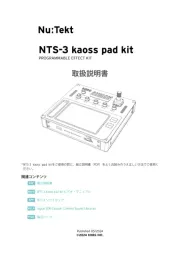
4 Februari 2025

27 Januari 2025

2 December 2024

2 December 2024

7 December 2023

19 Juni 2023

12 Juni 2023

11 Juni 2023

10 Juni 2023

1 Juni 2023
Handleiding DJ Gear
- DNA
- Miditech
- Numark
- Ion
- Faderfox
- Bigben Interactive
- Pyle Pro
- Muse
- Zomo
- Suonobuono
- Pyle
- Martin
- Flexson
- AudioQuest
- Fluid
Nieuwste handleidingen voor DJ Gear
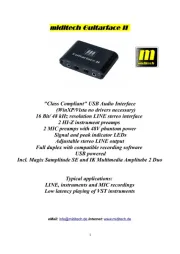
5 Augustus 2025
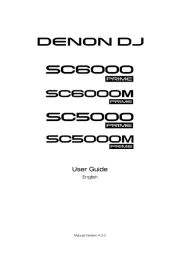
5 Augustus 2025
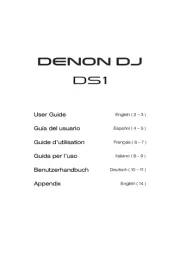
4 Augustus 2025
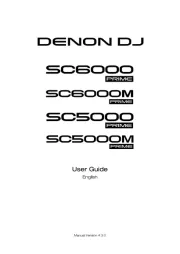
4 Augustus 2025
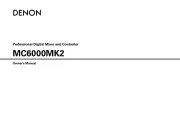
4 Augustus 2025
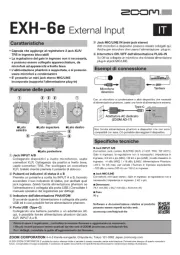
3 Augustus 2025

29 Juli 2025

29 Juli 2025

29 Juli 2025

28 Juli 2025